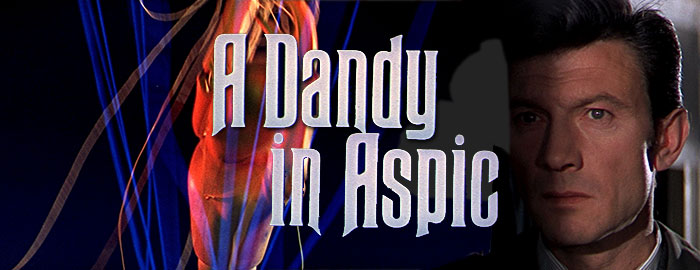
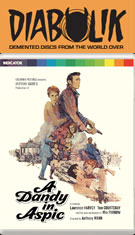

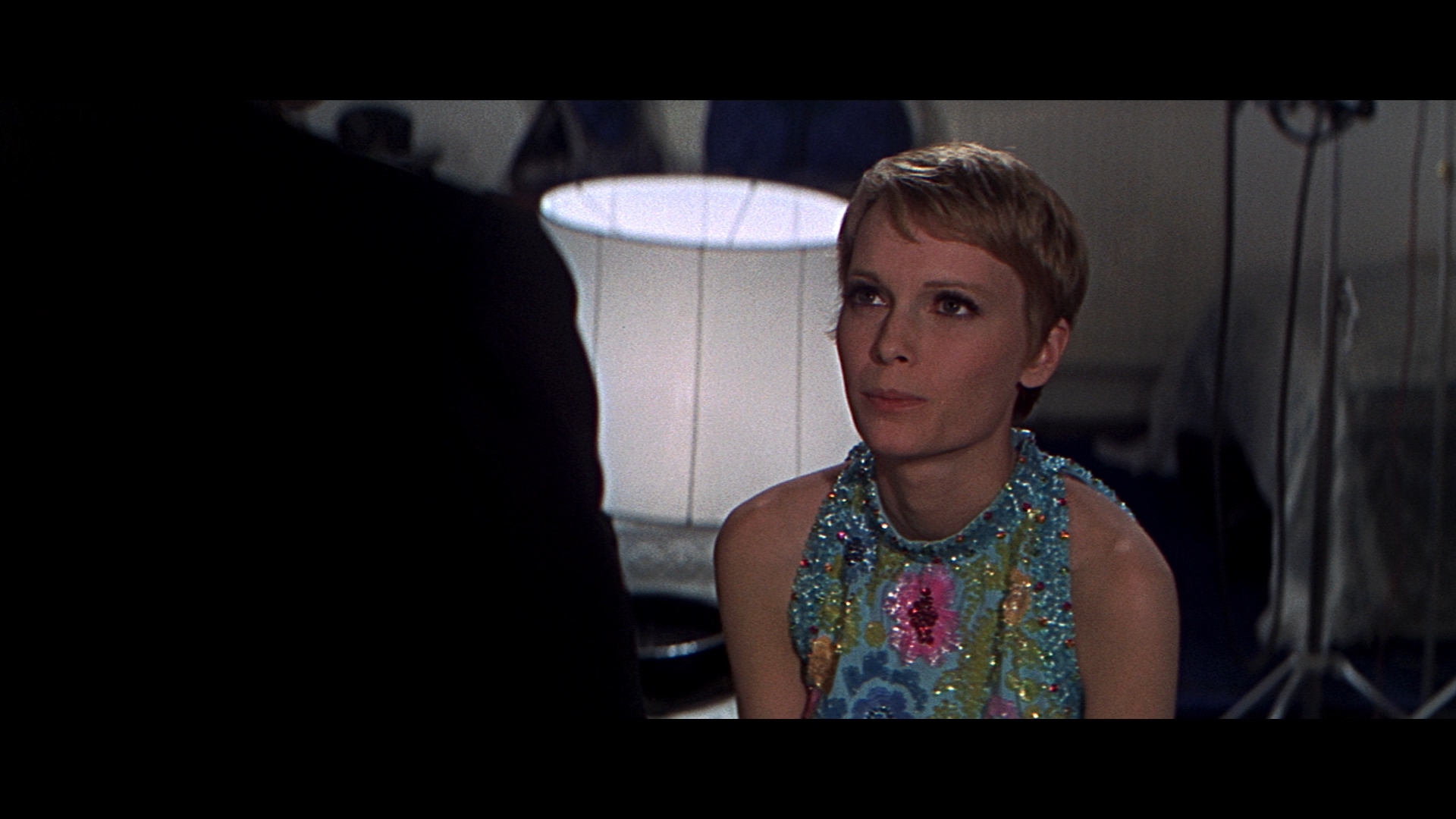 the spy movie craze in full
the spy movie craze in full 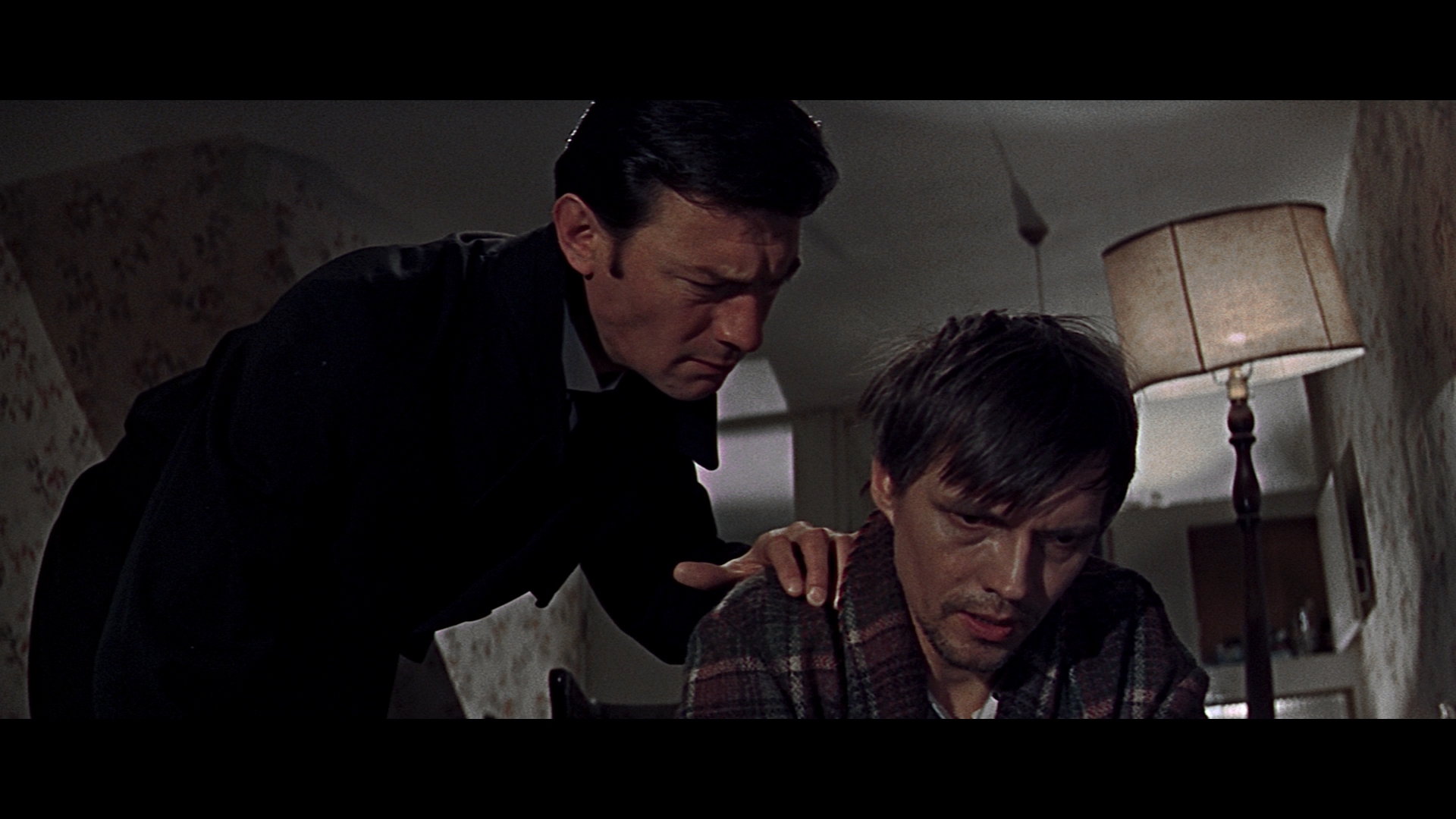 swing in the latter half of the '60s thanks to James Bond and writers like John Le Carré, producers were scrambling to bring any reputable literary property to the big screen with characters ranging from Matt Helm to Harry Palmer trotting around the globe finding danger and excitement. In 1968, English writer Derek Marlowe (The Disappearance) adapted his own novel, the inscrutably titled A Dandy in Aspic, for what would be the final film by legendary film noir and western director Anthony Mann, with star Laurence Harvey stepping in uncredited to finish it after the auteur's death.
swing in the latter half of the '60s thanks to James Bond and writers like John Le Carré, producers were scrambling to bring any reputable literary property to the big screen with characters ranging from Matt Helm to Harry Palmer trotting around the globe finding danger and excitement. In 1968, English writer Derek Marlowe (The Disappearance) adapted his own novel, the inscrutably titled A Dandy in Aspic, for what would be the final film by legendary film noir and western director Anthony Mann, with star Laurence Harvey stepping in uncredited to finish it after the auteur's death. 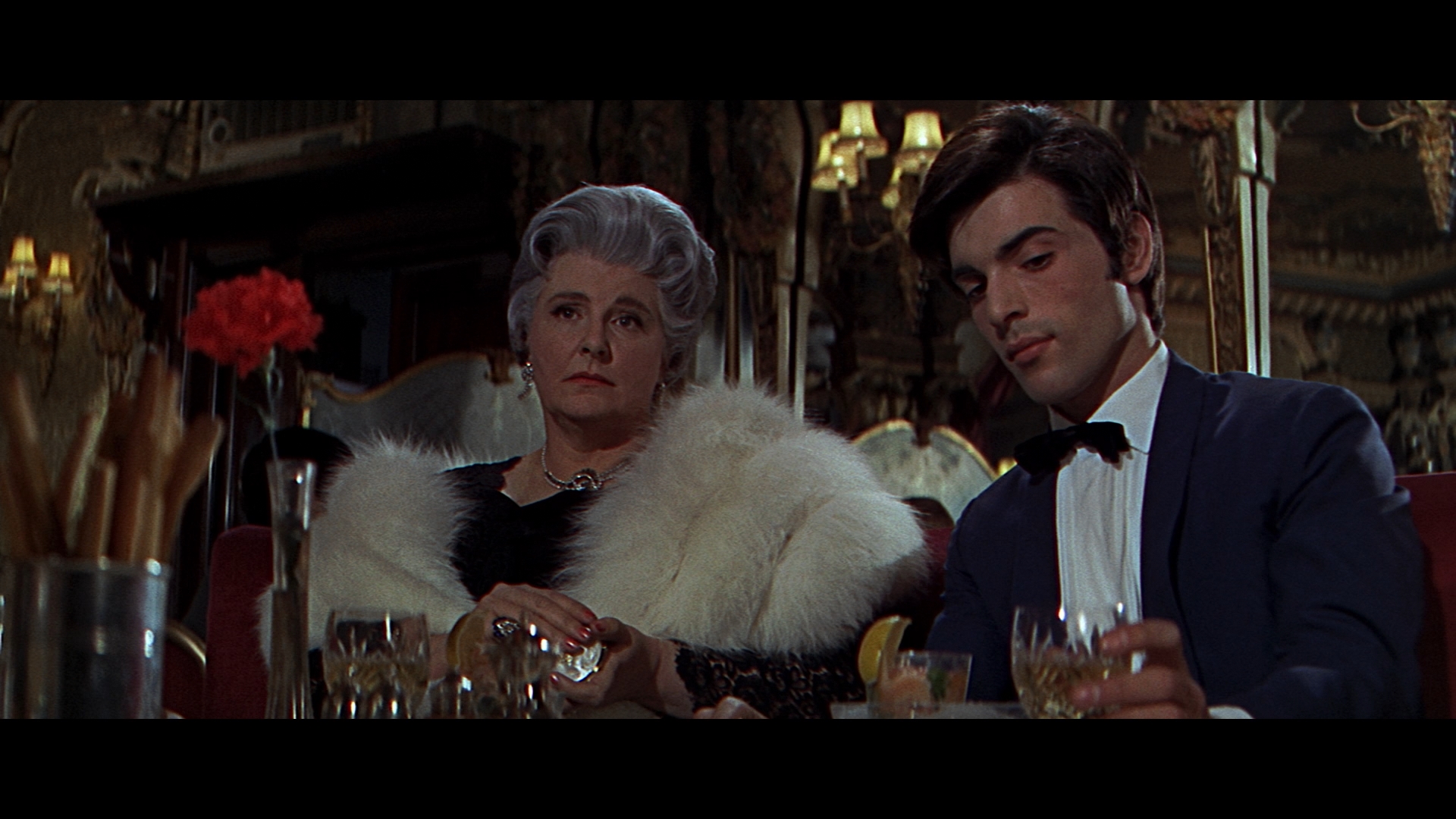 obviously a bit bumpy in spots due to its tortured history, A Dandy in Aspic is quite an enjoyable, stylish little espionage thriller highlighted by lots of pithy, memorable dialogue delivered by old pros like Courtenay, Lionel Stander, Harry Andrews, and a very cast-against-type Peter Cook, popular at the time as a comedian. The wide Panavision photography and snappy score by Quincy Jones (which has inexplicably never had a soundtrack release of any kind) add to the pleasure
obviously a bit bumpy in spots due to its tortured history, A Dandy in Aspic is quite an enjoyable, stylish little espionage thriller highlighted by lots of pithy, memorable dialogue delivered by old pros like Courtenay, Lionel Stander, Harry Andrews, and a very cast-against-type Peter Cook, popular at the time as a comedian. The wide Panavision photography and snappy score by Quincy Jones (which has inexplicably never had a soundtrack release of any kind) add to the pleasure 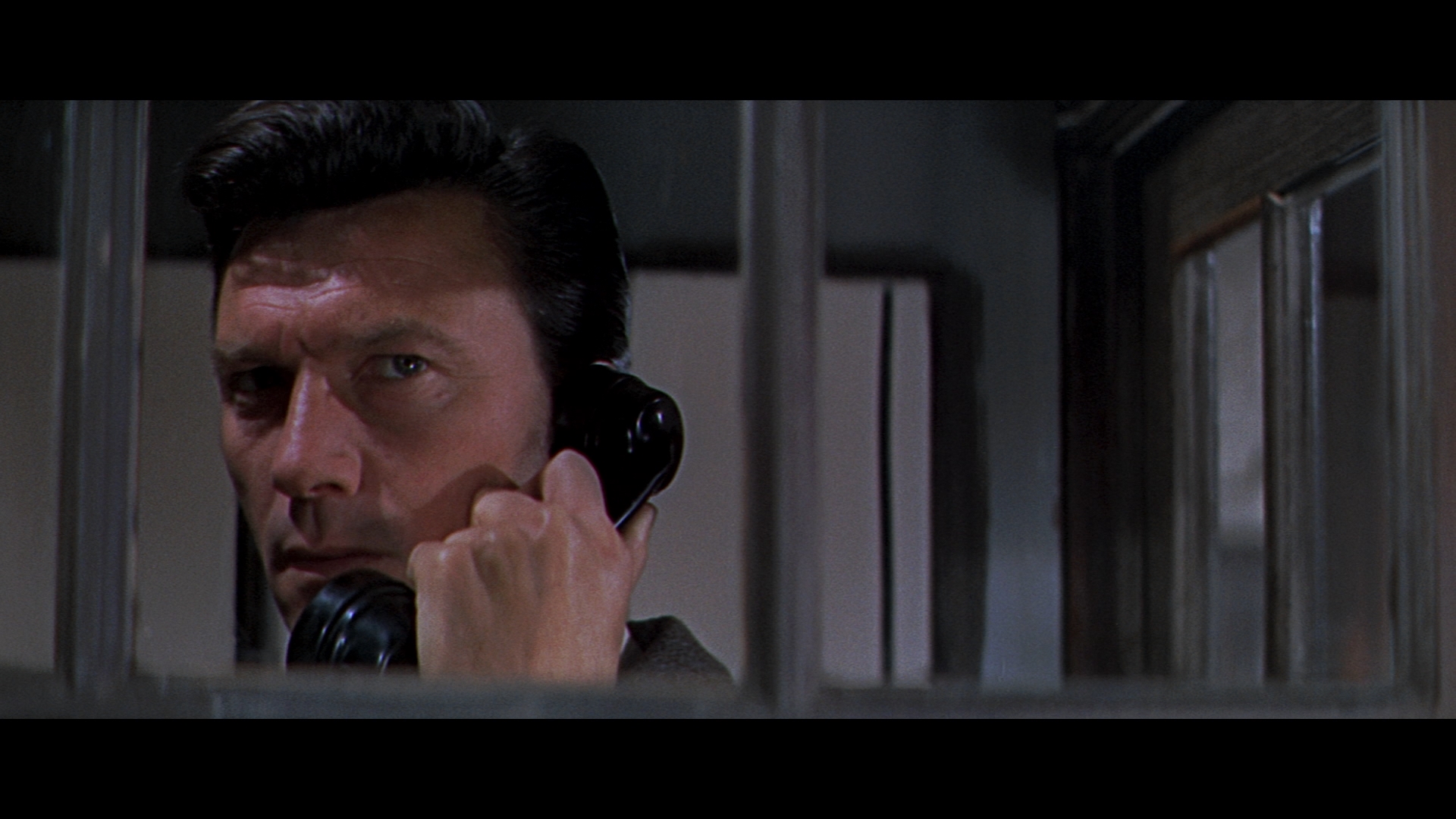 of the film, while Farrow is appealing in what amounts to a window dressing type of role. (And she's still putting on that weird not-quite-Mid-Atlantic accent she was using in Rosemary's Baby.) For a '68 film it's also surprisingly light on mod '60s touches, though there is an awkward, fleeting animated effect in the final moments that didn't look convincing even when this was in theaters. All told, it's a slick, compelling little film that's built up a small but dedicated following over the years and serves as a fine final statement for its peerless director.
of the film, while Farrow is appealing in what amounts to a window dressing type of role. (And she's still putting on that weird not-quite-Mid-Atlantic accent she was using in Rosemary's Baby.) For a '68 film it's also surprisingly light on mod '60s touches, though there is an awkward, fleeting animated effect in the final moments that didn't look convincing even when this was in theaters. All told, it's a slick, compelling little film that's built up a small but dedicated following over the years and serves as a fine final statement for its peerless director. 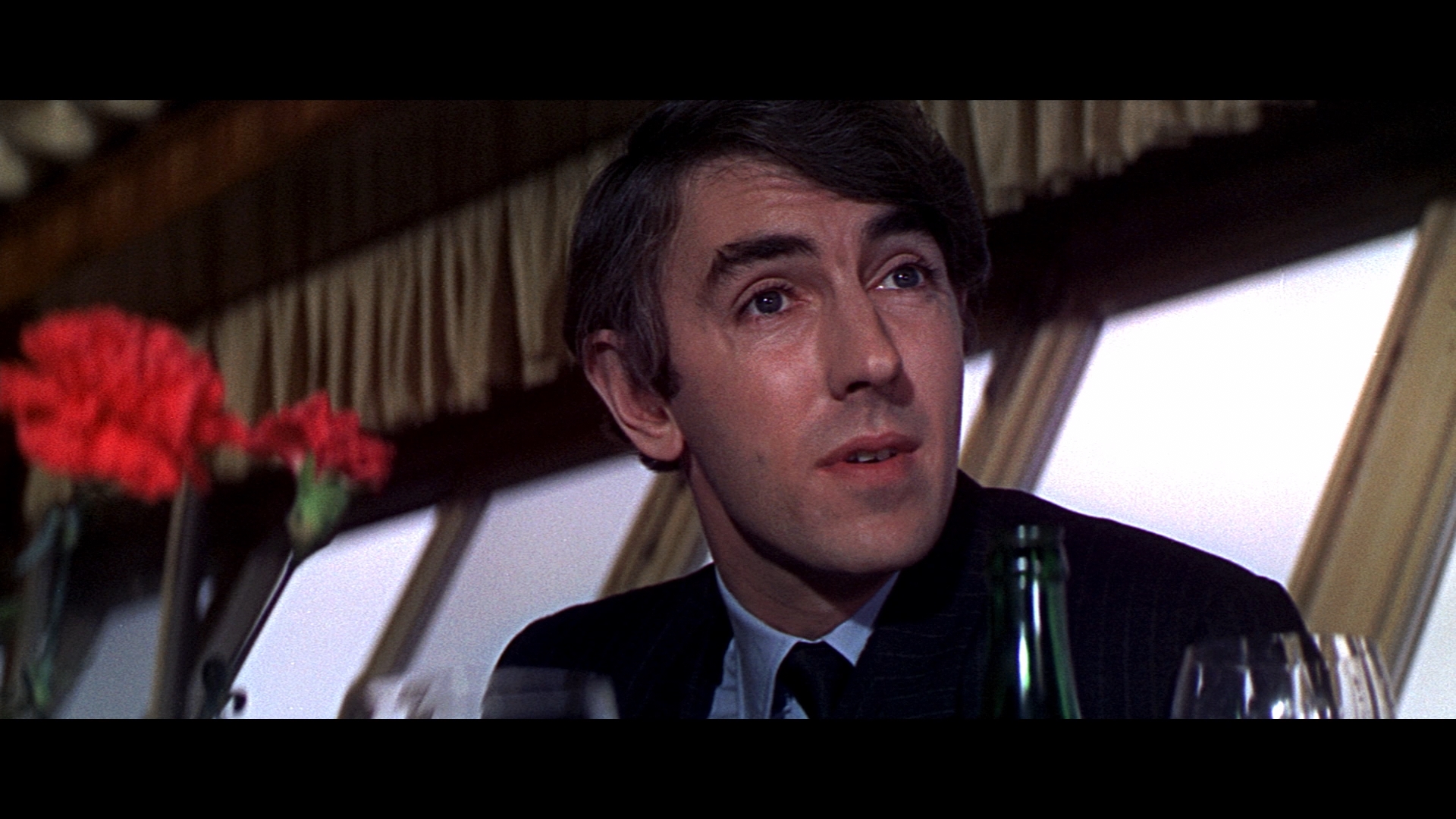 Columbia film stock look with some grungy color processing and those hard contrast edges against bright backgrounds (don't worry, that's not edge enhancement), and thankfully there haven't been any attempts to process the image or pretty it up for modern audiences. The LPCM English mono audio is also in fine shape, with optional English SDH subtitles. In a welcome
Columbia film stock look with some grungy color processing and those hard contrast edges against bright backgrounds (don't worry, that's not edge enhancement), and thankfully there haven't been any attempts to process the image or pretty it up for modern audiences. The LPCM English mono audio is also in fine shape, with optional English SDH subtitles. In a welcome 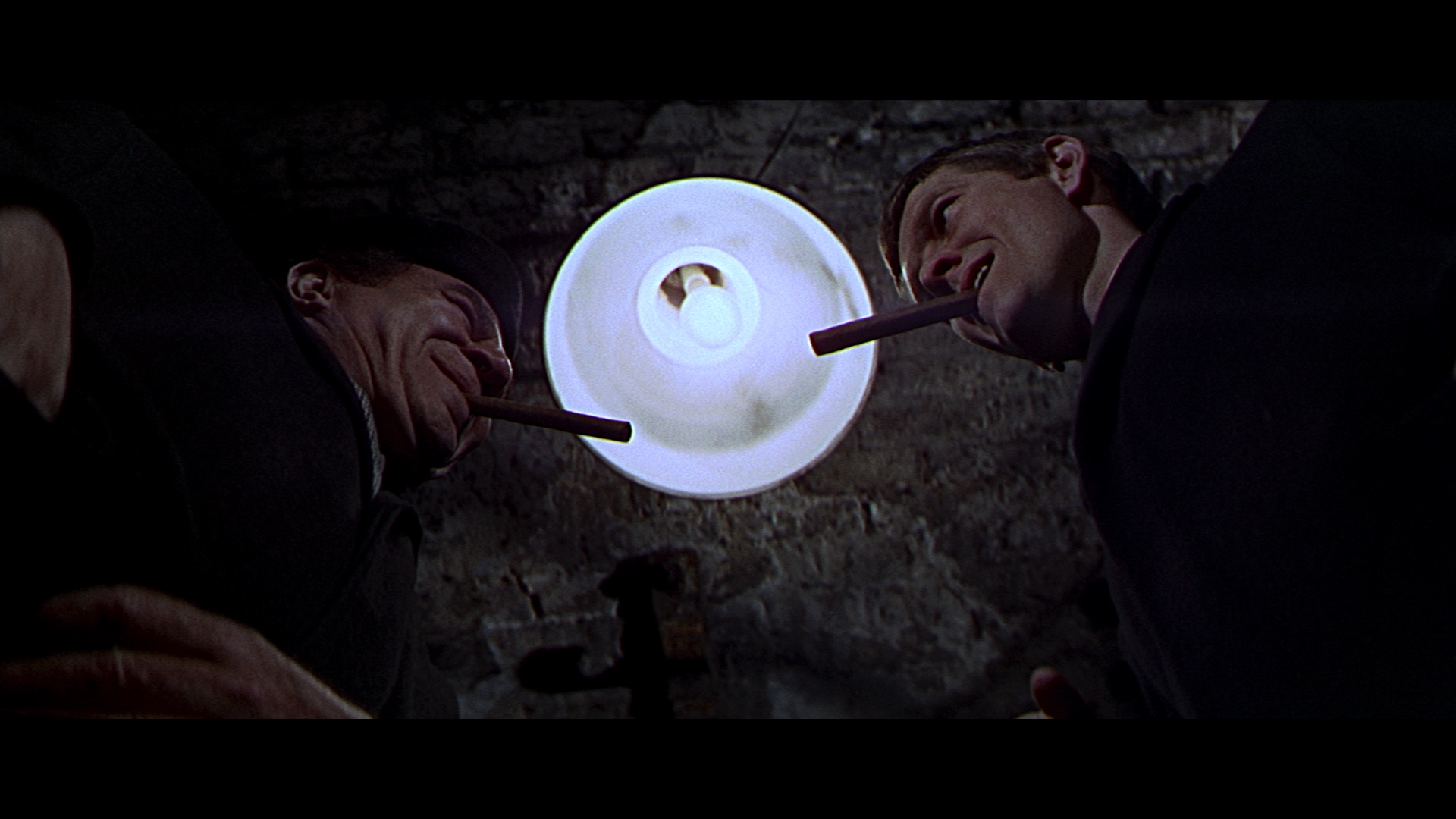 addition, you also get an isolated music and effects track to get the closest thing to a release of Jones's score we're likely to have for a long time.
addition, you also get an isolated music and effects track to get the closest thing to a release of Jones's score we're likely to have for a long time. 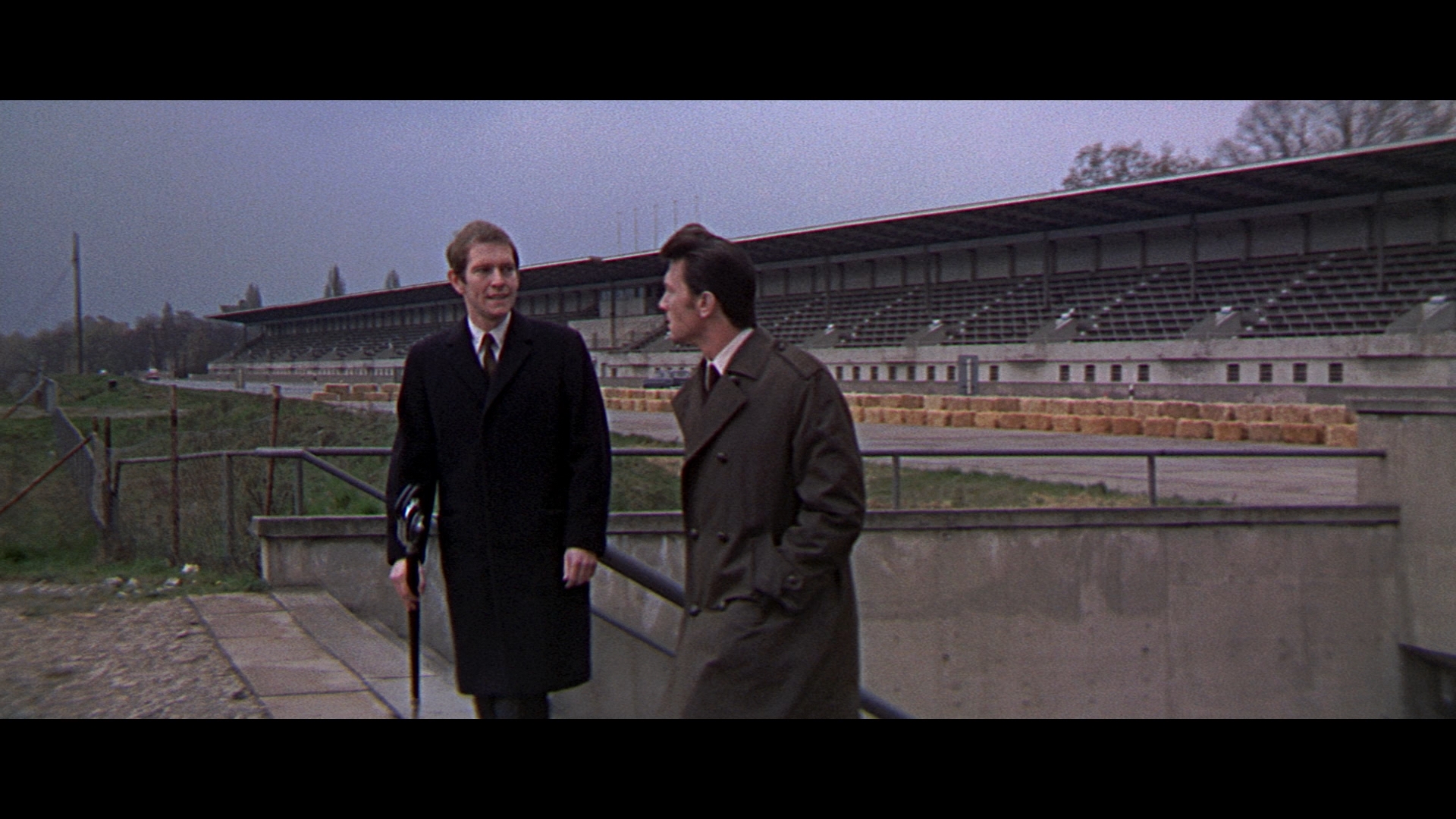 technician Terry Schubert, camera assistant Nigel Cousins, and stunt man Colin Skeaping chatting about shooting in London and West Berlin at the height of the Cold War. The eerie, colorful opening sequence (which was more or less duplicated in the memorable teaser for David Fincher's The Game) gets explored in "Pulling Strings" (21m22s) with titles designer Michael Graham Smith and puppeteer Ronnie Le Drew noting how the concept was
technician Terry Schubert, camera assistant Nigel Cousins, and stunt man Colin Skeaping chatting about shooting in London and West Berlin at the height of the Cold War. The eerie, colorful opening sequence (which was more or less duplicated in the memorable teaser for David Fincher's The Game) gets explored in "Pulling Strings" (21m22s) with titles designer Michael Graham Smith and puppeteer Ronnie Le Drew noting how the concept was 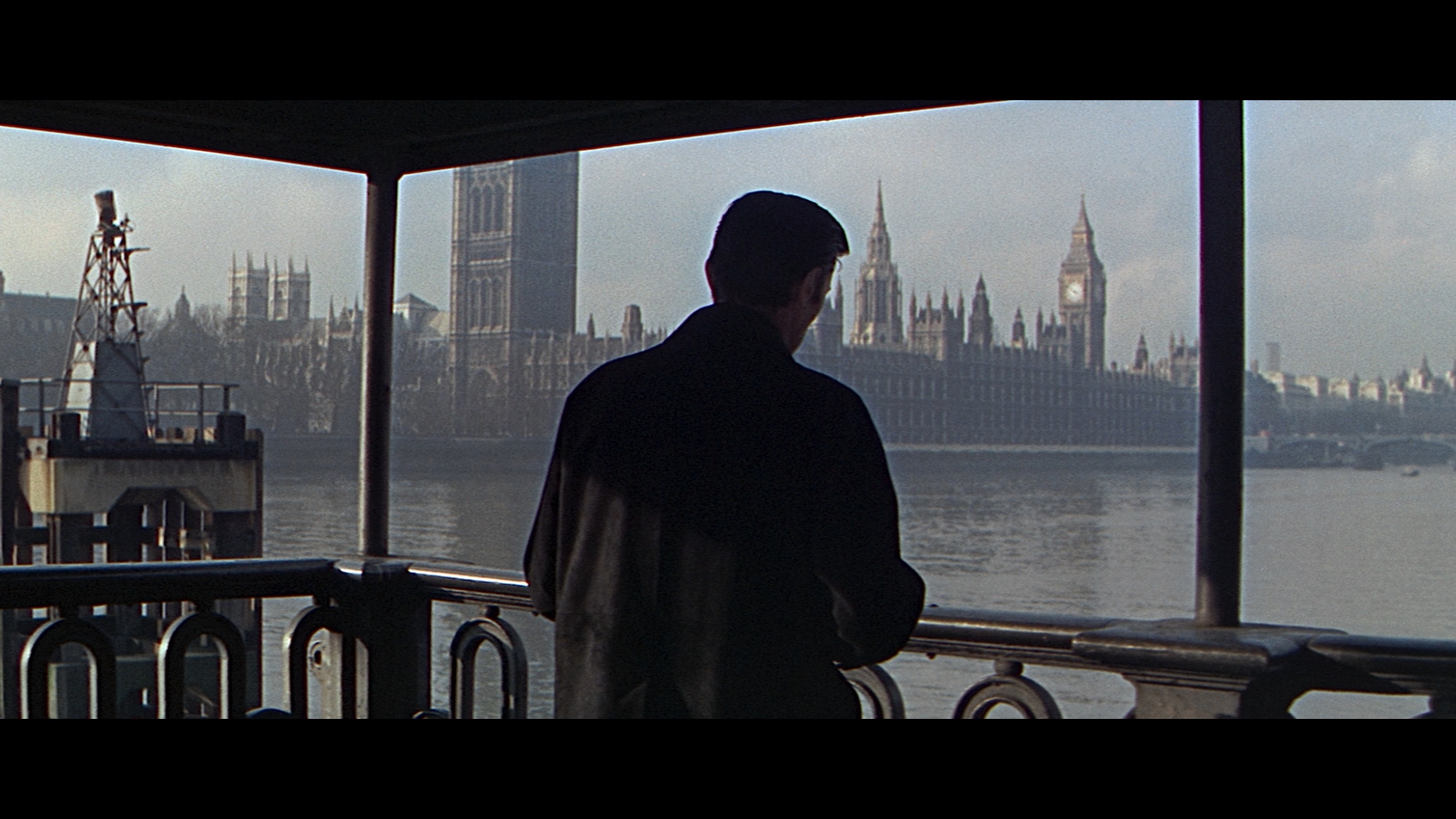 created and the featureless puppet was designed to move in a jarring, unconventional way. "Inside Mann" (11m35s) features critic Richard Combs analyzing the film within the context of Mann's output, with its visual approach extending the relationship of character to landscape present in some of his most notable titles. A similar thread is found in "London to Berlin" (5m14s), a visual guide to the locations used throughout the film with very specific address in most cases if you feel like recreating any scenes in your spare time. The vintage "Berlin: The Swinging City" (4m34s) is a promotional short from Columbia touting the film while showing off the "split personality" of the two sides of the once divided city including the requisite shots of West Berlin shaking it on the dance floor. Also included are the original theatrical trailer, a gallery of production photos and promotional stills, and an insert booklet featuring new liner notes by Jeff Billington, an archival press report from the set, a brief essay by Marlowe, and sample critical reviews from the initial release.
created and the featureless puppet was designed to move in a jarring, unconventional way. "Inside Mann" (11m35s) features critic Richard Combs analyzing the film within the context of Mann's output, with its visual approach extending the relationship of character to landscape present in some of his most notable titles. A similar thread is found in "London to Berlin" (5m14s), a visual guide to the locations used throughout the film with very specific address in most cases if you feel like recreating any scenes in your spare time. The vintage "Berlin: The Swinging City" (4m34s) is a promotional short from Columbia touting the film while showing off the "split personality" of the two sides of the once divided city including the requisite shots of West Berlin shaking it on the dance floor. Also included are the original theatrical trailer, a gallery of production photos and promotional stills, and an insert booklet featuring new liner notes by Jeff Billington, an archival press report from the set, a brief essay by Marlowe, and sample critical reviews from the initial release. ![]()